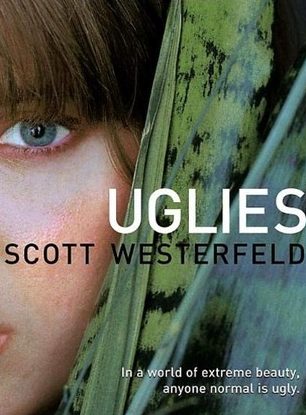‘Uglies’: Your New Identity Has Arrived

Scott Westerfeld, a #1 New York Times bestselling author, published “Uglies” in 2005.
Every person will feel insecure with his or her physical appearance at some point in their life. In the dystopian fiction novel “Uglies” (2005) by Scott Westerfeld, insecurity will not be a problem for the people once they turn 16.
This novel follows 15-year-old Tally Youngblood, who has been waiting desperately for what seems like centuries to fix everything about her body: her wide nose, her thin lips, and her stubby legs. But it is not an issue for long because this dystopia erases all your imperfections with a procedure at age 16. This is not a choice, nor is it a premium; this life-changing plastic surgery is mandatory for everyone, shining a light on how overemphasized beauty is in a world that believes that there is no way to live other than having a flawless face.
Westerfeld appeals to his audience by using a narrative-like style of writing that allows for the creation of an emotional conflict-driven plot that is easy to follow with a clear sequence of events. This also fully immerses the reader into the futuristic dystopian society, as he uses vivid descriptions of the characters and setting that give life to the novel.
The author opens the book with “The early summer sky was the color of cat vomit” (Westerfeld 1). This is not your ordinary opening to a book, but the author still transitions it back into the context of the story. The sky is traditionally thought of as beautiful and peaceful, but he uses this contrasting metaphor to draw in the reader. Westerfeld has a unique style of writing that enhances the reading experience by putting together words that generally do not come to mind.
Some may believe that this book is merely a quick read without much literary value. However, while I was diving deeper into this book, I was able to remember events that the characters had to undergo and the lessons that it taught them and what they learned from them.
For example, the author gives the reader a plethora of insights on how the world may become someday when we are older with a growing number of technology users. Every now and then, we see posts on the media about various people and their desires to remove imperfections that are on their bodies. We then look at these pictures informing people about plastic surgery operations that are possible to undergo.
Teenagers of Tally’s age can easily sympathize with her character because we all want to be confident with our bodies. But this is not easy to achieve when society sets such high standards of beauty with harsh definitions of what refinement is. We have such judgemental perspectives that are embedded into our minds when we view a photo or video that is not flawless based on society’s standards, with stereotypes of being skinny, white, blonde and wide-eyed. Physical appearance will inevitably change, whether it be through technology or time, but your character and who you are on the inside will not, which is why your personality is more important and radiates through everything.
While I was pages away from the book’s ending page, I noticed that the author does not give the reader too many details yet still paints a full picture in our minds. He creates this alternate universe that does not exist yet but has been built so well in his book, “Uglies.”
The characters have a unique way of talking to one another that parallels the way my friends and I generally speak. For instance, Tally is talking to her friend, who says, “‘I think my face is already right!’…Tally rolled her eyes. ‘For an ugly.’”(Westerfeld 44). Until I read this book, the thought of changing my body or physical appearance through plastic surgery has never crossed my mind. Tally and her friend have not turned 16 yet, and they are already talking about such a mature subject for teens in our world today.
This book enables us grasp onto this entirely different world that we have yet to experience. Cities and towns in this book are seamlessly reflect our society’s infrastructure that we are living and breathing off of today. This makes it easy for readers to believe that this made up society that I have only read through words, in a few hundred pages, is built out of the ruins of our world today.
Your donation will support the student journalists of Portola High School. Your contribution will allow us to purchase equipment and cover our annual website hosting costs.



